Western Azerbaijan no more without indigenous Azerbaijanis Triumph of justice through peace
The term “Western Azerbaijan” has been making headlines amidst the Azerbaijani government’s efforts aimed at restoring historical justice, which lies with the return of Azerbaijanis to their ancestral homes in modern-day Armenia. Because Western Azerbaijan has long been hidden behind the fake narratives and misappropriated historical facts peddled by the Armenian government and people by erasing the heritage of Azerbaijanis within the borders of today’s Armenia, a country that was established in the historical lands of Azerbaijan, namely in Western Azerbaijan.
Now it is time to restore justice and truth like Azerbaijan did in the 44-day Second Karabakh War in 2020 by liberating the Karabakh and East Zangazur regions from Armenian occupation. However, the scenario for Western Azerbaijan is completely based on peace.
The restoration of Azerbaijan’s sovereignty over East Zangazur and the relocation of indigenous Azerbaijanis to the region has made fertile grounds for Azerbaijan to righteously seek the resettlement of Azerbaijanis to West Zangazur, part of Western Azerbaijan in modern-day Armenia.
“Of course, Western Azerbaijanis should return to their ancestral lands; this is their right, and all international conventions recognize this right of theirs. As the state of Azerbaijan, we must do our best to secure this right. Again, I said during the meeting with community representatives there that we wanted to do it peacefully, and I am sure we will achieve that,” President Ilham Aliyev said in his recent interview with local TV channels.
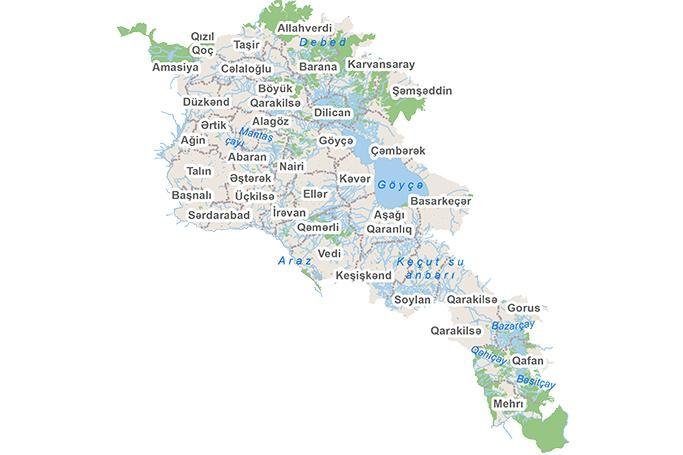
The map of Western Azerbaijan
The president’s remarks are literally the general introduction of Azerbaijan’s plans for Western Azerbaijan – the largest and strongest country in the South Caucasus that intends to champion peace in response to the bloody and reckless expulsion of its people from where they lived for centuries. The next war with Armenia is not an option for Baku, although it owns the strongest and best-equipped military in the region.
Furthermore, the authorities in Azerbaijan do not adhere to ideas of making territorial claims to others’ lands. Azerbaijan does not want to expand its borders with new lands, this has never been on Baku’s agenda. Even during the prevention of Armenia’s provocations on the conditional border, the Azerbaijani troops have not been ordered to advance through the territory of its neighbour, although it could happen as easily as one, two, three. The mainstream idea in Azerbaijan is the restoration of historical justice, which could be possible through the peaceful return of Western Azerbaijani residents to their homeland.
In the meantime, the deportation of Azerbaijanis from Western Azerbaijan (modern-day Armenia) was not the only chapter of the state-sponsored ethnic cleansing campaign of Armenia. The post-deportation period, as the continuation of the anti-Azerbaijan hysteria, also took its toll on the cultural heritage of the indigenous Azerbaijani residents of Western Azerbaijan.
In his recent interview, President Aliyev said no signs of life have been observed in the settlements vacated by Azerbaijanis after their forcible deportation by Armenians.
“Now there are videos, there are other documents, and there are people who visited those villages. They saw that everything was destroyed and there is no life there,” the president said, pledging to revive those settlements by using all opportunities available similar to what is currently happening in Karabakh and East Zangazur regions.
Prior to the interview, in his meeting with the Western Azerbaijan Community members in Baku on December 24, 2022, President Aliyev took a brief tour into the history of Western Azerbaijan, saying it is the historical land of Azerbaijan, which is established by a number of historical documents, historical maps, and the history itself. According to him, before the final deportation of Azerbaijanis accompanied by mass murder and torture, they lived in more the 300 settlements across modern-day Armenia, including 170 villages solely populated by Azerbaijanis and 90 villages with the majority of the population comprised by them.
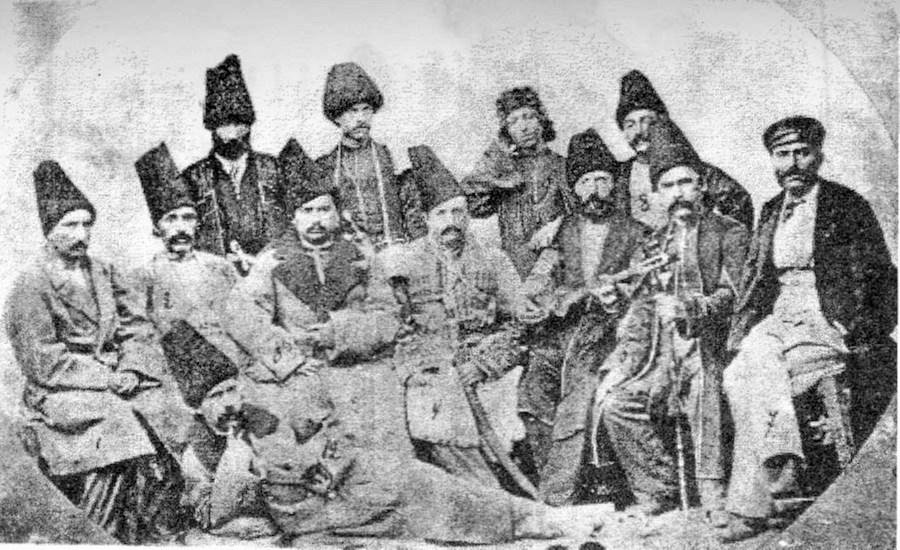
Ethnic Azerbaijani residents of Western Azerbaijan
“Unfortunately, as they did in Karabakh, the Armenians razed all our historical and religious monuments in Western Azerbaijan to the ground. They wanted to erase the historical heritage of the Azerbaijani people, but they failed. Because there is history, there are documents, and there are maps,” he said.
Following the meeting with the president, the Western Azerbaijan Community, a Baku-based non-governmental organisation, has been taking necessary measures to facilitate the restoration of historical justice and return of the Azerbaijani deportees from the region to their home. On January 5, the Community kicked off the census of Azerbaijanis expelled from Armenia in different years during the 20th century.
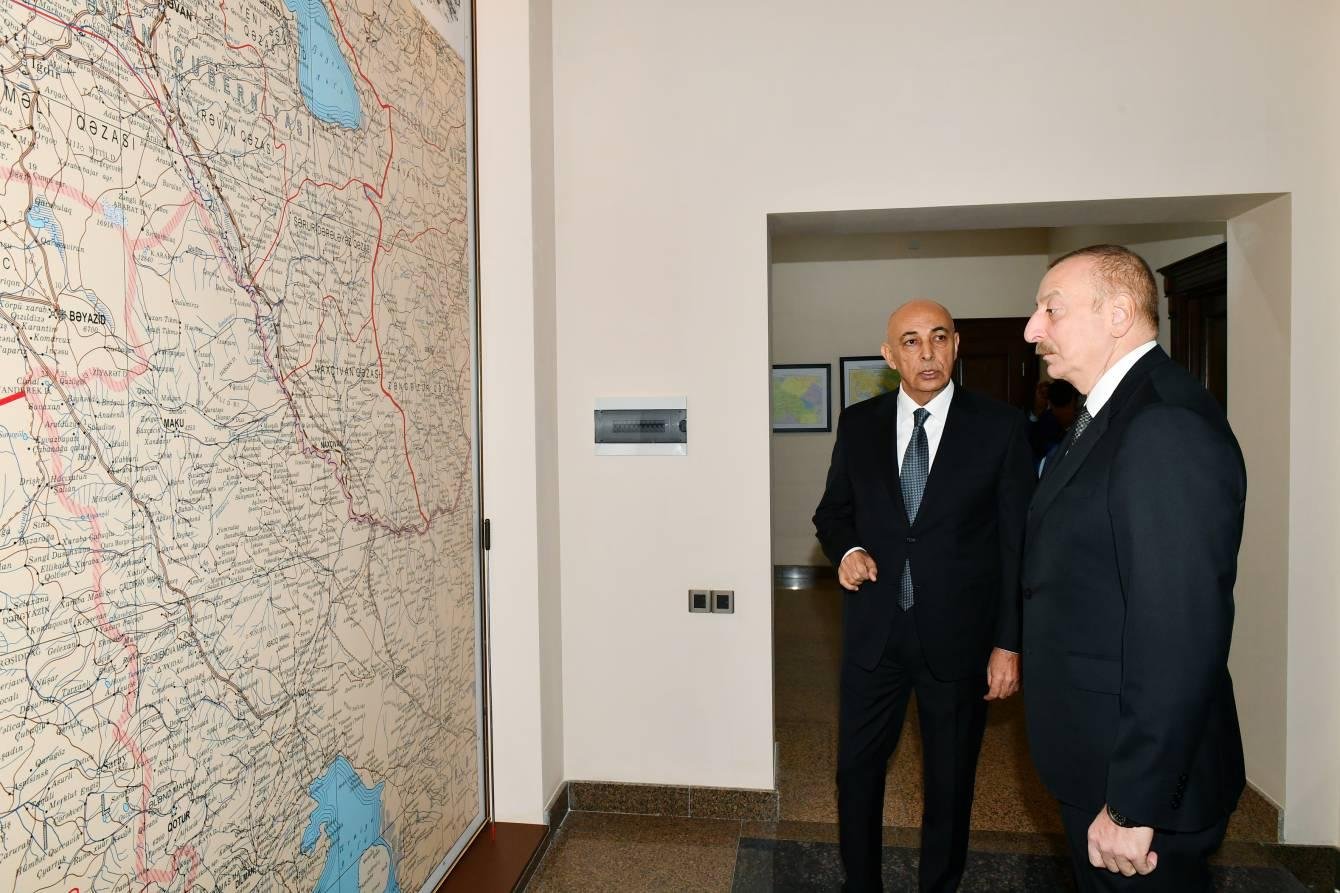
President Ilham Aliyev during the visit to the administrative building of the Western Azerbaijani Community in Baku
The first phase of the census covers the registration of the people who have been forced to flee Armenia in 1988-1991 based on the already available data about the residents of 150 out of 300 areas populated by ethnic Azerbaijanis. The next rounds of the census will be focused on the deportation that took place between 1905-1953, the Western Azerbaijan Community’s spokesperson Ulviyya Zulfuqar said.
On January 12, the Western Azerbaijan Community members addressed a letter to the Armenian authorities to recall the forcible expulsion of Azerbaijanis in 1905-06, 1918-21, 1948-53, and 1988-91 and the mass destruction of the Azerbaijani historical and cultural heritage in Armenia. The final notes of the letter called on Yerevan to create necessary conditions for the safe and dignified return of Azerbaijanis to their homeland in Western Azerbaijan or modern-day Armenia.
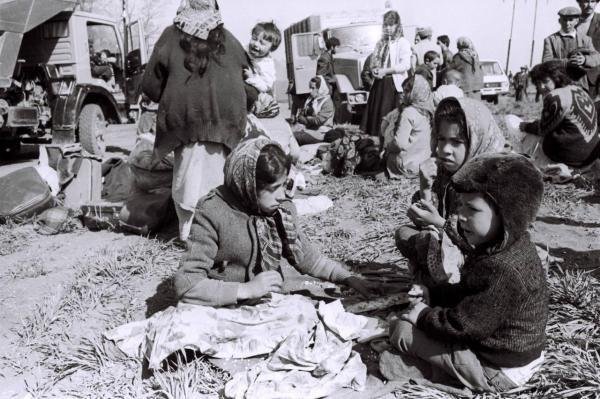
More than 300,000 ethnic Azerbaijanis have been deported from Armenia from the early 20th century to 1991
Azerbaijani authorities are convinced that the return of ethnic Azerbaijanis to Armenia would be good also for Armenia since there are no mon-ethnic states in the South Caucasus and in the entire Eurasia region. As President Aliyev said it would help Armenia “to escape mono-ethnic state stigma”.
Armenia, according to various sources, is a mono-ethnic state with almost 99 per cent of its population being Armenians. This fact surfaces as a “source of pride” for the locals since they consider themselves as “indigenous people” in the South Caucasus and are known to be intolerant toward ethnic diversity. In August 2022, the Committee on the Elimination of Racial Discrimination of the UN Human Rights of the High Commissioner expressed in its report concerns about the mono-ethnic state status of Armenia.
While Armenians boast their exclusive dominance in their country, on December 30, 2022, the Azerbaijan National Academy of Sciences (ANAS) established three departments to deal with issues related to Western Azerbaijan, particularly the study of original Azerbaijani toponyms that were refashioned and misappropriated by Armenians, which prove that the country was home to other nations, as well.
Western Azerbaijan
The historical lands of Azerbaijan on the country’s western edge has been originally settled by ethnic Azerbaijanis before they were included in a “divide and rule” plan developed by the Soviet authorities. The city of Iravan (modern-day Yerevan) and the Zangazur region in Western Azerbaijan were among the main cradles of the Azerbaijani population and culture before their forcible separation from the Azerbaijan Democratic Republic (ADR) in 1918 and 1920, respectively.
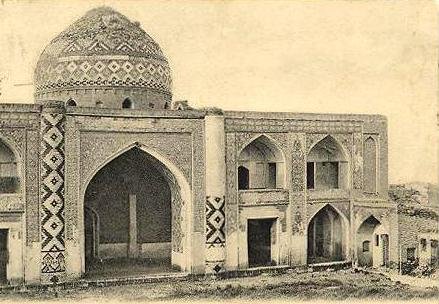
The Abbas Mirza mosque built by Azerbaijani rulers of the Iravan khanate in 1606
Iravan had been initially settled by ethnic Azerbaijanis after its establishment by their ancestors. Armenian historian and priest Hovannes Shahkhatunyan wrote that all 49 khans who ruled the Iravan khanate for 390 years from 1441 to 1828 were Azerbaijani Turks. According to him, the list containing the names of the Azerbaijani khans of Iravan was included in the Armenian Soviet Encyclopedia. According to Ronald Grigor Suny, a Professor Emeritus of Political Science and History at the University of Chicago, Iravan had been a Muslim city until the Batumi Conference participated by the representatives of the Ottoman Empire and the Transcaucasian Seim in 1918. In 1787, when the tensions boiled between Azerbaijan and the Georgian rulers, the Russian Empire’s covert agent and representative in Georgia, Colonel Stepan Burnashev wrote in a letter to General Grigori Potyomkin that the Ottoman authorities would defend Azerbaijan and would not agree to concede the Azerbaijani city of Iravan to Georgia.
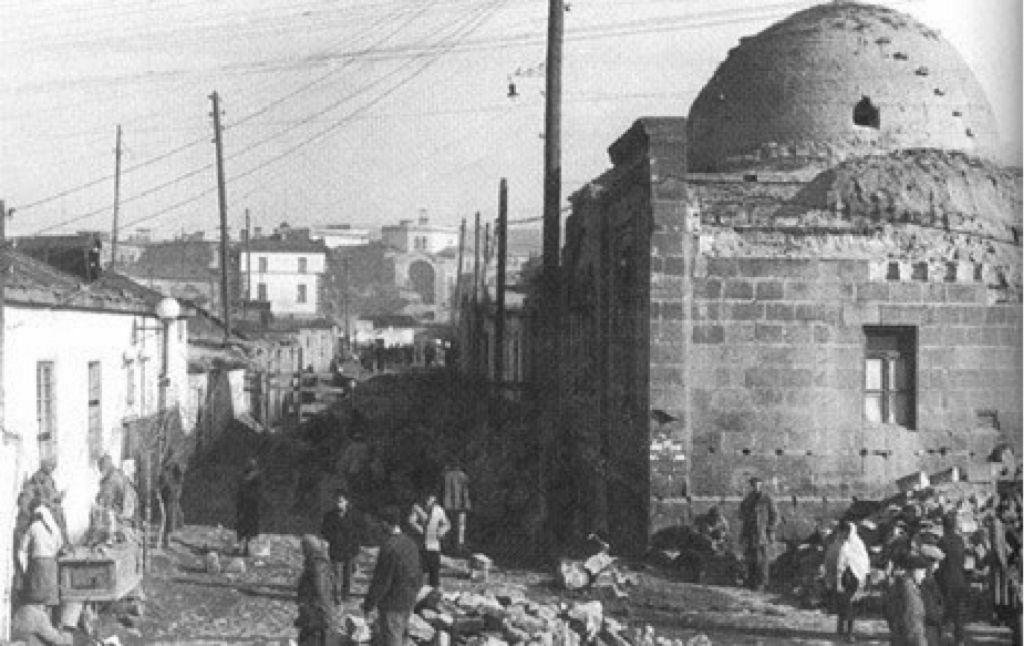
Ethnic Azerbaijani residents of Iravan (modern-day Yerevan) around the Sardar mosque
Armenians mushroomed in Iravan as a result of their massive long-term relocation by the Russian Empire to the city and other territories of Azerbaijan started after the empire’s victory over Iran in two wars in the 1804-1812 and 1826-1828 war. A special commission was established to deal with the deployment of Armenians from Ottoman and Iranian territories to the South Caucasus. As a result of the relocation, the number of Armenians in the Karabakh region of Azerbaijan reached 18,000 between 1828 and 1829 and increased to 34,606 by 1843. The next wave of deployment of Armenians into the South Caucasus by Russia lasted from 1904 to 1915, when over 260,000 ethnic Armenians were placed in the territories of Azerbaijan. Despite protests, around 130,000 Armenians were relocated to the Azerbaijani provinces of Iravan and Yelizavetpol (the name of Azerbaijan’s Ganja city during Tsarist Russia's period).
Iravan was ceded to the newly-established Armenian republic on May 29, 1918. Although Iravan was handed over “willingly” to the newly established Armenian state by the ADR government, historical sources claim it to be organized and implemented forcibly under the pressure of foreign forces.
The annexation of Iravan took its toll on its indigenous Azerbaijani population and the cultural heritage of Azerbaijanis. According to 1916 data, there were over 373,000 Azerbaijanis living in Iravan, however, only 12,000 Azerbaijanis were registered in census files in 1922.
The final round of the “Armenianization” of and the deportation of Azerbaijanis from Iravan took place in 1988 when over 300,000 ethnic Azerbaijanis living in the historical Western Azerbaijan region, or modern-day Armenia were expelled forcibly from their ancestral lands.
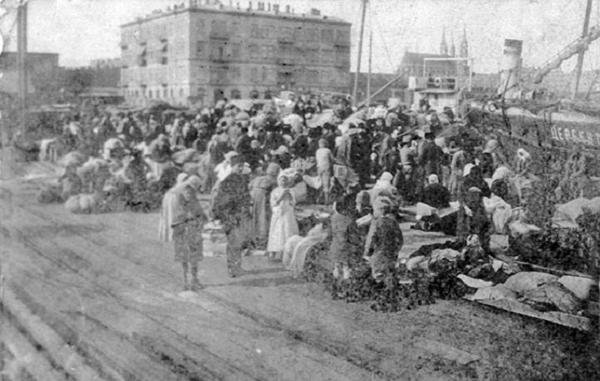
Deportation of ethnic Azerbaijanis from modern-day Armenia
Shortly after the Bolshevik forces subjugated the Azerbaijan Democratic Republic on April 28, 1920, a significant part of the Zangazur region was also ceded to the newly-established Armenian Soviet Socialist Republic. The annexation of the territories by Armenia took place under the aegis of the Soviet empire, which forced the Azerbaijani authorities to make territorial concessions to Armenians.
Zangazur is a historical region that forms the southern part of modern-day Armenia and a small portion of the territory of Azerbaijan in the country’s Zangilan, Gubadli and Lachin districts.
The Zangazur region, inhabited by the Turkic tribes, was a part of the Seljuk empire during its 150-year-long rule in the 11th and 12th centuries, which further expanded the Turkish-Islamic influence within the region. Starting from the 13th century, Zangazur was invaded by Mongol-Tatar tribes and the Timurid Empire. From the 15th century to the 18th century, the region was a part of the medieval Azerbaijani states of Garagoyunlu, Aghgoyunlu, and Safavids.
Demographic changes in the city of Iravan and the Zangazur region took place during the reign of Tsarist Russia and the Soviet Union. Similar to Iravan, the colossal changes in the demographic composition in Zangazur was the fruit of the Russian Empire’s relocation of Armenians and the consecutive massacres of Azerbaijanis by the same Armenian nationals.
As a result of the massacres committed by Armenian armed groups in 1905-1907 and 1914-1920 in Zangazur, about half a million indigenous Azerbaijanis and other Muslim locals were killed. In those years, 115 Muslim villages in Zangazur have been wiped off the face of the earth. In 1919, Armenian nationalists massacred 900 Muslims in the Chayli and Okhchu villages of Zangazur, including 400 women and children that were killed inside a destroyed mosque. In the same year, the far-right ultra-nationalist Dashanksutyun party rulers announced Zangazur as an “inseparable part of Armenia” and in 1920 completed the “Armenianization” of the region by capturing and ethnically cleansing a total of 51 villages in the 3rd and 4th quarters of Zangazur.
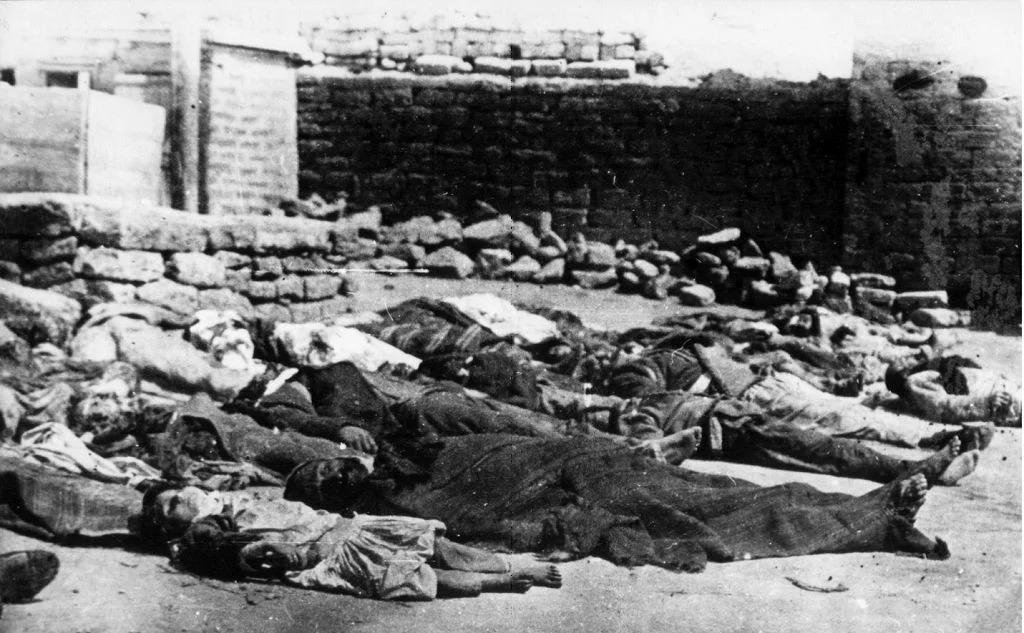
About half a million indigenous Azerbaijanis and other Muslim locals were killed in Western Azerbaijan by Armenians
In 1933, the territory of the Armenian SSR was divided into districts and the name Zangazur was changed to new district names such as Gafan, Gorus, Garakilsa (Sisian), and Mehri.
The final round of the “Armenianization” of historical Azerbaijani settlements in modern-day Armenia took place in 1988-1991 when over 300,000 ethnic Azerbaijanis living in historical Western Azerbaijan were expelled forcibly from their ancestral lands.
Erasing Azerbaijani heritage
Relocation of Armenians to and deportation of Azerbaijanis from Western Azerbaijan paved the way for the next chapter of the brutal ethnic cleansing campaign of Azerbaijanis, this time against the heritage of the Azerbaijani residents.
Faig Ismayilov, an expert on cultural heritage, and research fellow of the Institute of History of Azerbaijan National Academy of Sciences (ANAS) said more than 3,500 historical and cultural monuments, 500 cemeteries, and 391 mosques belonging to Azerbaijanis were completely destroyed by Armenians in the territory of present-day Armenia. They have vandalized residential houses, mosques, Albanian-era shrines, artistic stone samples, tombstones and more in the villages once settled by ethnic Azerbaijanis.
In May 2022, journalists from Caliber.Az travelled to Armenia’s capital Yerevan to reveal the unforeseen cultural genocide against the Azerbaijani heritage in the city.
The state-sponsored cultural vandalism in Yerevan was a part of the large-scale anti-Azerbaijan campaign aimed at erasing all material evidence that testify to the belonging of the city to Azerbaijanis. According to historical sources, at the beginning of the 20th century, there were 310 mosques registered on the territory of the Iravan province (modern-day Yerevan and northern parts of Armenia). However, today only one mosque can be seen in the city - the Goy Masjid (Blue Mosque), which is referred to as "Persian", our journalists revealed on the ground.
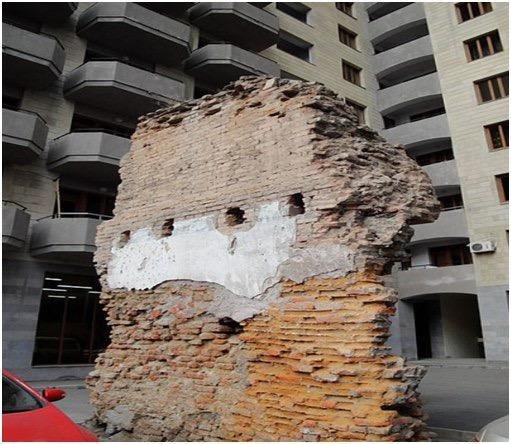
The last ruin of the Sardar mosque of Azerbaijanis in Iravan (modern-day Yerevan)
Furthermore, the Demirbulag Mosque, the Emir Saad Mausoleum, the Sardar Mosque, the Tepebashi Mosque, and dozens of other cultural and religious monuments of Azerbaijanis have not survived the pre-planned cultural vandalism by Armenia.
Final say …
The number of Armenians currently living in Azerbaijan is estimated at around 55,000-60,000, including 25,000-30,000 settling in the Karabakh region. Furthermore, an Armenian church is preserved in the very centre of the capital Baku. This is just for the reader’s information, if he/she may think that the co-existence of Armenians and Azerbaijanis could not be possible. We believe that everything is possible and we also believe that we can turn the impossible into possible through peace …








